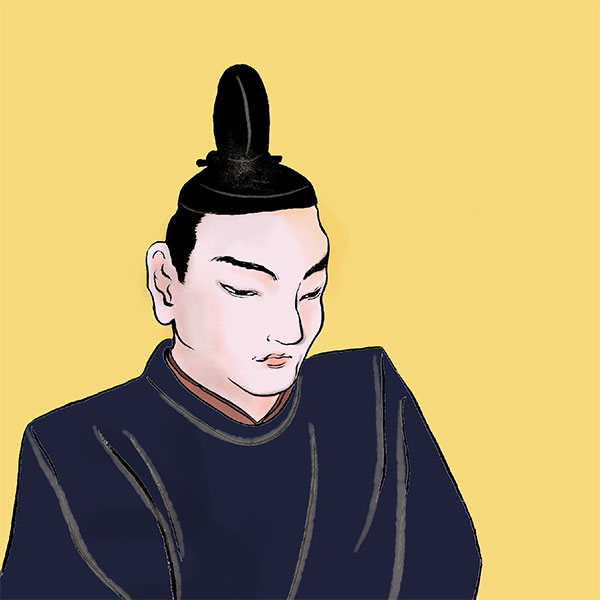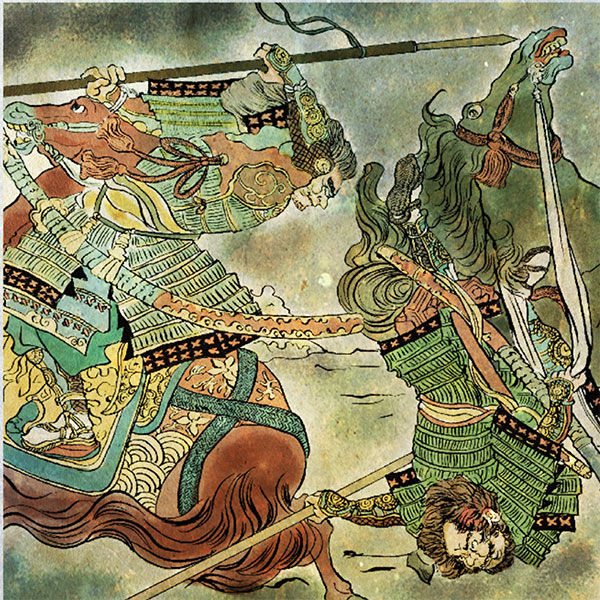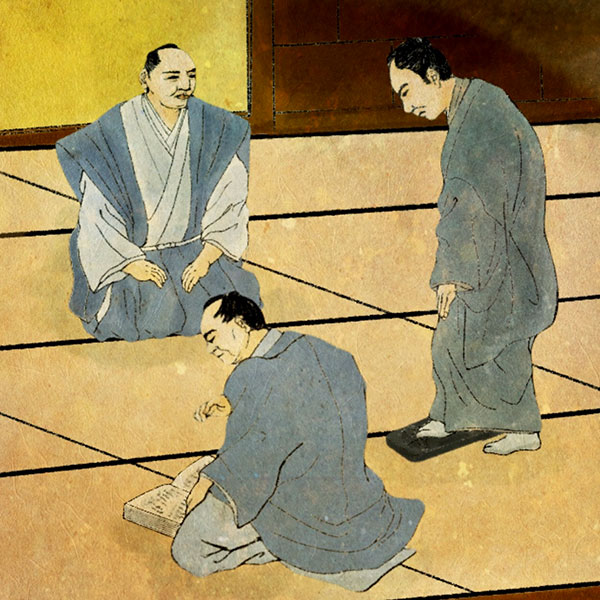Harunobu Arima (2/2)Christian daimyo who worked hard at trade

Harunobu Arima
- Article category
- biography
- name
- Arima Harunobu (1567-1612)
- place of birth
- Nagasaki Prefecture
- Related castles, temples and shrines

Shimabara Castle
- related incident
Commander Peaso will come to Japan the following year. Peaso reports the incident in Macau to Fujihiro Hasegawa, the Nagasaki magistrate. Fujihiro Hasegawa, the Nagasaki magistrate, was dissatisfied with the trade practices up to that time, and the Portuguese, including Peaso, were also dissatisfied with Japan. Fujihiro Hasegawa and Peaso had a difficult relationship.
Harunobu Arima, whose sailor had been killed the previous year, was also thinking of taking revenge on Peaso. Fujihiro Hasegawa, who was dissatisfied with the Portuguese such as Peaso, abetted Harunobu Arima and plotted to capture Peaso and capture merchant ships.
Sensing danger, Peaso holed up in his own ship, Da Graça, and prepared to set sail with his cargo still on board. There, Harunobu Arima attacked the commander's ship with the cooperation of Fujihiro Hasegawa. The commander set fire to the powder magazine and scuttled the da Graça.
As a result of this incident, Japan's trade with Portugal decreased, and Christians such as the Society of Jesus began to lose their influence. Instead, it was England under William Adams, who had gained the trust of Tokugawa Ieyasu, who actively traded with Japan. Furthermore, Arima Harunobu had a troubled trade relationship with Fujihiro Hasegawa, the Nagasaki magistrate who had abetted him.
Okamoto Daihachi incident and its end
The story takes place after the Nosa Senhora da Graça incident.
Arima Harunobu asked Tokugawa Ieyasu to restore three of his former territories, which had belonged to Nabeshima Naoshige, to Tokugawa Ieyasu. In 1612, Honda Masazumi dispatched his vassal Okamoto Daihachi to Arima Harunobu to investigate. Daihachi Okamoto told Harunobu, ``If I have the funds, I will mediate between the Shogunate and the Cabinet and try to restore the former territory,'' and ``Ieyasu also has a special eye on Arima Harunobu,'' and prepared fake documents about Ieyasu. Did. As a result, Harunobu Arima handed over 600 pieces of silver as campaign funds.
Of course, the campaign funds were embezzled by Daihachi Okamoto.
However, Harunobu Arima, who handed over the funds, has not heard anything no matter how long he waits. Harunobu questioned Daihachi Okamoto's owner, Masazumi Honda, and the fraud was discovered. Daihachi is imprisoned.
However, Okamoto Daihachi, who was imprisoned, begins to say that Arima Harunobu was trying to kill Nagasaki Magistrate Fujihiro Hasegawa, with whom he had a rift. It appears that the murder plan was true, and Harunobu Arima could not defend himself.
During the Sengoku period, Arima Harunobu, who was successful among several feudal lords, lost his position before the Tokugawa family. Harunobu was banished to Kai Province and forced to commit suicide. Harunobu Arima passed away at the age of 45.
It is said that Arima Harunobu committed suicide as a samurai because he was a Christian, and that because he was unable to commit suicide due to Christian teachings, he had his vassals behead him.
Later Arima family
Harunobu Arima was forced to commit seppuku due to the Okamoto Daihachi Incident, but Harunobu's son Naozumi Arima married Tokugawa Ieyasu's adopted daughter Kunihime (Tokugawa Ieyasu's grandson and Honda Tadakatsu's grandson). That way, you can avoid being implicated. Furthermore, since he took a wife from the Tokugawa family, he was treated as a Junfudai.
Naozumi complied with the Edo shogunate's ban on Christianity, and his policies became extremely harsh, urging everyone from his relatives to his vassals to the people of his territory to abdicate Christianity. Naozumi himself gradually grew tired of the ban on Christianity and requested the shogunate to move him to Nobeoka, Hyuga Province.
After Naozumi, the Arima family moved to the Echigo Itoigawa domain and the Echizen Maruoka domain, and reached the beginning of the Meiji Restoration.
Place related to Harunobu Arima
- Remains of Arima Harunobu's residence
- Harunobu Arima was ordered to be confined due to the Okamoto Daihachi Incident. Harunobu was entrusted with 35 retainers to Tanimura, Tsuru District, Kai Province, the chief retainer of Tadanaga Tokugawa, the lord of the castle in Suruga Province. Afterwards, he was ordered by the shogunate to commit suicide and died. It is said that Harunobu committed seppuku at this time, but because he was a Christian, he could not commit suicide, so he had his servants kill him by the head.
``Arima Harunobu's Residence Site'' is the place where Harunobu was imprisoned in Kai Province and has been maintained as a historical site. - Arima River Martyrdom Site
- Harunobu Arima supported Christianity. However, when Harunobu's son, Naozumi Arima, became the head of the family, the shogunate suppressed Christianity and banned Christianity within the territory. However, many of the Arima family's vassals were Christians. Some of these vassals did not accept the apostasy of Christianity.
These three vassals and their families were burned to death and martyred in the presence of over 20,000 believers in 1613. In 2009, a commemorative mass and celebration was held to celebrate the completion of the pilgrimage site at the Arimagawa Martyrdom Site, where the burning was performed, and the eight people who died at the stake were beatified and a martyrdom monument was erected to honor them. I am. - Arima Christian Heritage Memorial Hall
- Minamishimabara City in Nagasaki Prefecture was ruled by Harunobu Arima. Christianity flourished in this place, and Japan's first Christian school, Arima Seminary, was located there. However, in the Edo period, there was a ban on Christianity, and it was also an area where Christianity was secretly practiced for 250 years during the Shimabara Rebellion.
The museum provides an easy-to-understand introduction to the history of the Arima family and Christian culture.
Hinoe Castle
Hinoe Castle was a castle located in Takagi District, Hizen Province (present-day Minamishimabara City, Nagasaki Prefecture).
At the beginning of the Kamakura period, Hinoe Castle was built by Fujiwara Tsunesumi, a descendant of Fujiwara Sumitomo. Also, after the castle was built, Fujiwara Tsunesumi changed his surname to Arima.
The Arima family was only one power on the Shimabara Peninsula, but in the late Muromachi period, Takasumi Arima controlled various powers on the peninsula and grew into a major power.
During the era of Arima Haruzumi, it became the largest territory, but came under pressure from the rising power of the Ryuzoji family. Haruzumi's son, Harunobu Arima, became a Christian daimyo and built a seminary (Christian school) in the castle town, and was influenced by Western culture.
Hinoe Castle became the domain office of the Arima family in the Edo period, but it was transferred during the era of Harunobu's son Naozumi Arima, ending the approximately 400-year rule of the Arima family.
After the Arima family left, Shigemasa Matsukura moved into the castle and found Hinoe Castle inconvenient, so he built Shimabara Castle, made it the domain office, and abandoned Hinoe Castle.
Hattengu (a large tengu that appears in Japanese folklore) was enshrined at the castle ruins, and the area was developed into an orchard and fields. Currently, the Hinoe Castle ruins are designated as a national historic site.
Shimabara Castle
Shimabara Castle was located in Shimabara City, Nagasaki Prefecture.
In 1616, Naozumi Arima was transferred to the Nobeoka domain, and Shigemasa Matsukura moved there.
Shigemasa began construction of Shimabara Castle in 1618, partly because Hinoe Castle was too small. The castle was completed in 1624.
In 1630, the feudal lord Shigemasa Matsukura suddenly died. There, his son Katsuie Matsukura became the second lord of the domain. However, Katsuie imposed ruthless heavy taxes on the people of his territory. In the 14th year of Kanei (1637), the people of the territory could no longer endure the harsh rule and started an uprising called the Shimabara Rebellion. As a result of this uprising, the Matsukura family was destroyed. Katsuie was beheaded by the shogunate, but throughout the Edo period, he was the only daimyo to be decapitated instead of committing seppuku. The Shimabara Rebellion was such a shock to the Shogunate.
After that, several families moved to Shimabara as feudal lords. Shimabara Castle remained as the domain office until the Meiji era, when it was abandoned. Currently, the castle ruins have been designated as a designated historic site by Nagasaki Prefecture, and the castle tower and other features have been rebuilt. Today, it is used as a castle ruins park.
Reread Harunobu Arima's article
- related incident

- WriterTomoyo Hazuki(Writer)I have loved history and geography since my student days, and have enjoyed visiting historical sites, temples and shrines, and researching ancient documents. He is especially strong in medieval Japanese history and European history in world history, and has read a wide range of things, including primary sources and historical entertainment novels. There are so many favorite military commanders and castles that I can't name them, but I especially like Hisashi Matsunaga and Mitsuhide Akechi, and when it comes to castles, I like Hikone Castle and Fushimi Castle. Once you start talking about the lives of warlords and the history of castles, there's a side of you that can't stop talking about them.






